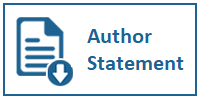JOINT AND SEGMENTATION DESIGN ON PAPER PUPPETS FOR CAT CHARACTERS IN CUT OUT STOP MOTION ANIMATION
DOI:
https://doi.org/10.31937/ultimart.v12i2.1436Abstract
Stop motion, particularly paper cut out animation, is one of the oldest yet surviving animation techniques to date. Similar to other traditional animation techniques, it offers appealing looks unique to its nature. With the development of new technologies, stop motion continues to evolve. Paper puppet act as actor, therefore it's the most essential element in production of paper cut out animation. Careful designs have to be made to ensure movements can be performed well by animators. The biggest question when designing puppets are how do we divide the parts (segmentation) and what kind of mechanism should we use to connect these parts (joint)? Several factors are to be considered when deciding the right approach for the answer. This qualitative research will use both observation and experiment method. Observation is conducted by studying existing paper puppets from other paper cut out animation shorts, tutorials, commercials, and behind the scenes videos from the filmmaker. Following the observation is an experiment where the author will use the data to explore paper puppets making, comparing benefits and weaknesses, and adjust the final method to comply the needs of the short animation project titled "Spay & Neuter” where the final design of the cat puppets will be applied.
Downloads
Published
How to Cite
Issue
Section
License
Authors retain copyright and grant the journal right of first publication with the work simultaneously licensed under a Creative Commons Attribution-ShareAlike International License (CC-BY-SA 4.0) that allows others to share the work with an acknowledgement of the work's authorship and initial publication in this journal.
Authors are able to enter into separate, additional contractual arrangements for the non-exclusive distribution of the journal's published version of the work (e.g., post it to an institutional repository or publish it in a book), with an acknowledgement of its initial publication in this journal.
Copyright without Restrictions
The journal permits the author(s) to hold the copyright without restrictions and will hold distributing rights without limitations.
The submitted papers are assumed to contain no proprietary material unprotected by patent or patent application; responsibility for technical content and for protection of proprietary material rests solely with the author(s) and their organizations and is not the responsibility of the Ultimart: Jurnal Komunikasi Visual or its Editorial Staff. The main (first/corresponding) author is responsible for ensuring that the article has been seen and approved by all the other authors. It is the responsibility of the author to obtain all necessary copyright release permissions for the use of any copyrighted materials in the manuscript prior to the submission.















